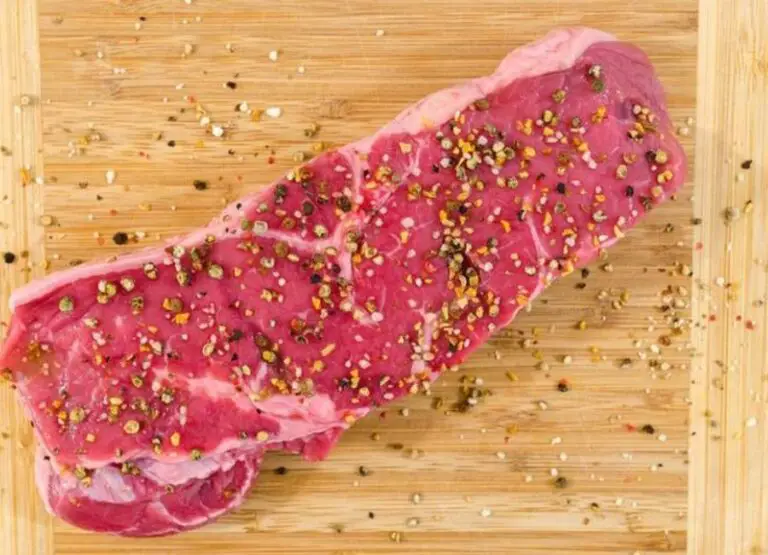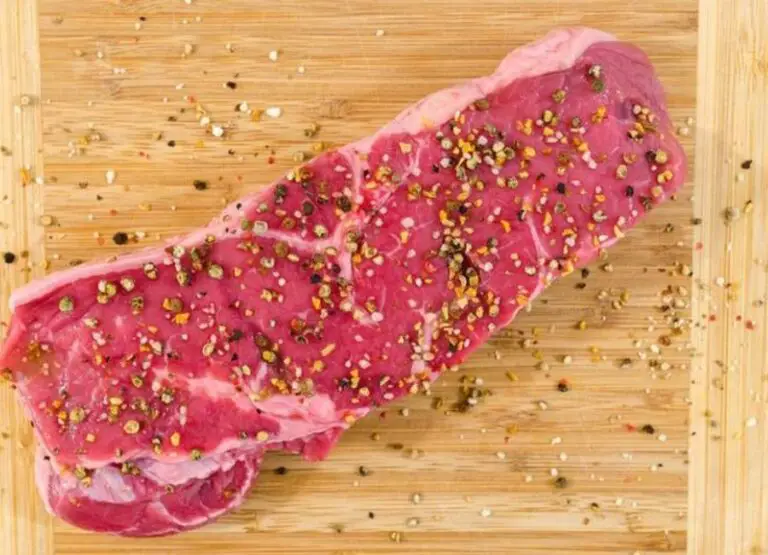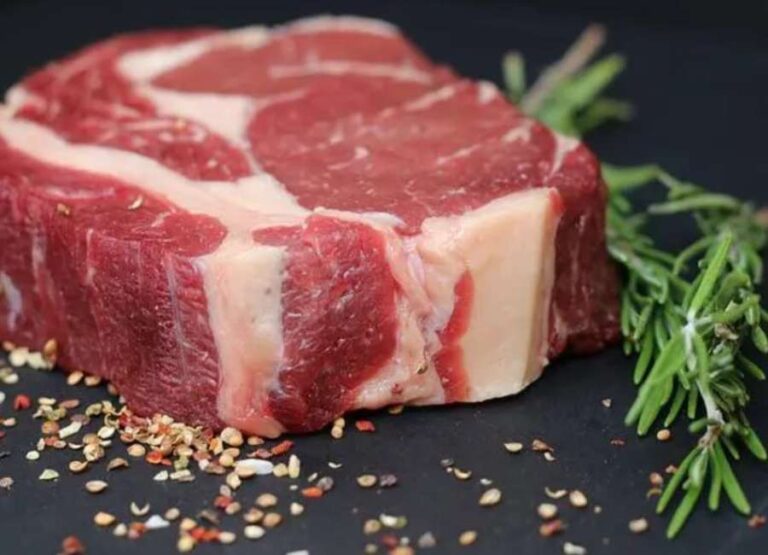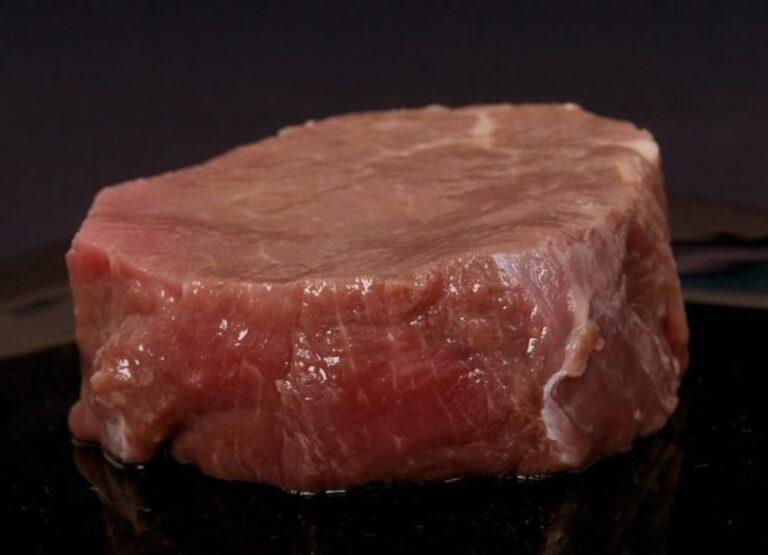Are Red Meats High In Cholesterol (Answered)
Are red meats high in cholesterol? Keep reading to find out more…
Beef, hog, and lamb have higher saturated fat and cholesterol per serving than chicken, fish, or plant proteins.
If you eat too much red meat, your cholesterol levels may rise, putting you at risk for heart disease, heart attack, and stroke.
According to MayoClinic.com, you are at the lowest risk if your total cholesterol is less than 200 milligrams per deciliter and your low-density lipoprotein, or LDL, is less than 130 milligrams per deciliter.
This article delves into the definition of cholesterol and its origins. It goes over the various forms of cholesterol, their functions, and the negative effects they have on the body.
What is cholesterol?
Cholesterol is a waxy, fat-like molecule found in all of your body’s cells.
Cholesterol is required by your body for the production of hormones, vitamin D, and chemicals that aid digestion. Your body produces all of the cholesterol that it requires.
Cholesterol can also be found in animal-based meals including egg yolks, meat, and cheese.
Cholesterol is a form of sterol, which is a lipid, or fat. Every cell in the human body needs this waxy, yellowish-white material to create its membranes.
Cholesterol is required by the human body for the production of vitamin D and a variety of hormones, including testosterone and estrogen.
Are red meats high in cholesterol?
Yes, red meat is one of the worst food high in cholesterol.
Red meats are a common source of dietary cholesterol, but the effect of dietary cholesterol on blood cholesterol levels is controversial.
Some studies suggest that dietary cholesterol has little effect on blood cholesterol levels, while others suggest that it may modestly increase levels.
The American Heart Association (AHA) recommends limiting dietary cholesterol to no more than 300 mg per day.
The AHA also recommends limiting saturated fat and trans fat intake, as these nutrients can also increase blood cholesterol levels.
Red meats are a good source of protein, iron, and other nutrients. When choosing red meats, look for leaner cuts and trim away any visible fat.
You can also cook red meats in ways that minimize their fat content, such as grilling, broiling, or baking.
How cholesterol is formed
Because cholesterol is required for healthy physical function, the liver and intestines produce around 80% of the cholesterol in the body.
Only around 20% of a person’s cholesterol comes from the meals he or she consumes.
How cholesterol is formed in the body
Cholesterol is a waxy, white material that is insoluble. It is transported throughout the body by two major blood transport systems:
Low-density lipoprotein (LDL) cholesterol transports the majority of cholesterol to cells. It’s known as ‘bad’ cholesterol because large levels of it in the bloodstream can clog your arteries.
LDL causes plaque to build up on the walls of your arteries, according to the American Heart Association (AHA)Trusted Source.
When plaque grows up, it can lead to two separate but equally serious problems.
For starters, it can constrict your blood vessels, making it difficult for oxygen-rich blood to travel throughout your body.
Second, it can cause blood clots to form, which can break free and obstruct blood flow, resulting in a heart attack or stroke.
When it comes to cholesterol, you want to maintain your LDL levels low — preferably under 100 milligrams per deciliter (mg/dL).
HDL cholesterol (high-density lipoprotein) is known as the “good” cholesterol because it aids in the removal of excess cholesterol from cells, especially those in the arteries.
It returns the bad cholesterol to your liver, where it is broken down and excreted.
High HDL levels have also been linked to a reduced risk of stroke and heart attack, whilst low HDL levels have been linked to an increased risk of stroke and heart attack.
HDL values of 60 mg/dL and greater are considered protective by the Centers for Disease Control and Prevention (CDC), whereas those below 40 mg/dL are a risk factor for heart disease, according to the CDC.
Read more: How Much Red Meat is Healthy.
Functions of cholesterol in the body
Here are some functions of cholesterol in the human body:
- Cholesterol helps to form the membranes that enclose cells in the body.
- Cholesterol is responsible for the distribution of cholesterol in the body.
- Note: cholesterol helps to produce hormones, including testosterone.
- Cholesterol is responsible for the structure and function of the skin.
- Cholesterol helps to produce nerve cells.
- Note: cholesterol helps to produce vitamin D.
- Cholesterol is essential for the production of sex hormones, including testosterone.
Meats that are high in Cholesterol
Due to their high levels of saturated fat and sodium, the following foods should be avoided.
Organ meat: Organ meats such as liver are known to be rich in vitamins and nutrients.
While this makes them an excellent part of many diets, they aren’t a great choice for people trying to reduce their cholesterol.
A 3-ounce serving of beef liver, for example, contains 333 milligrams of cholesterol.
Red meat: Saturated fat is abundant in beef, hog, and lamb. The fat content of hamburgers, ribs, pork chops, and roasts is the highest.
You don’t have to completely eliminate meat; simply consume it on rare occasions.
Stick to leaner meats like sirloin, pork loin, or filet mignon, and stick to the recommended 3-ounce portion size.
Better, substitute meat with low-saturated-fat and low-cholesterol foods such as skinless chicken or turkey breast, fish, and legumes.
Here are some meats that contains cholesterol:
- Beef
- Pork
- Lamb
- Chicken
- Fish
- Shellfish
- Eggs
Cholesterol Negative Effects on the Body
Here are some common cholesterol negative effects on the body:
- Cholesterol is a type of lipid that helps to build up cell membranes and is important for the proper function of the nerves and muscles.
- Too much cholesterol can increase the risk of heart disease.
- Cholesterol can also increase the risk of stroke, gallstones, and liver disease.
- Cholesterol can also contribute to cognitive decline, including memory problems and a decrease in IQ.
- Too much cholesterol can also interfere with the production of testosterone and other hormones.
- Cholesterol can be removed from the body by diet and exercise, but it can also be removed by drugs, including statins.
Ways to reduce cholesterol intake
Here are some common ways to reduce cholesterol intake:
- Eat a healthy diet that includes plenty of fruits and vegetables.
- Avoid eating high-fat foods and foods that are high in cholesterol.
- Reduce your intake of saturated fats.
- Exercise regularly.
- Take cholesterol-lowering medications if needed.
- Educate yourself and your loved ones about cholesterol and its importance.
Conclusion
If you have too much cholesterol in your blood, it can form plaque when it combines with other molecules in your blood. Plaque adheres to the inner surfaces of your arteries.
Atherosclerosis is the accumulation of plaque. It can cause coronary artery disease, in which your coronary arteries constrict or become completely clogged.
References







